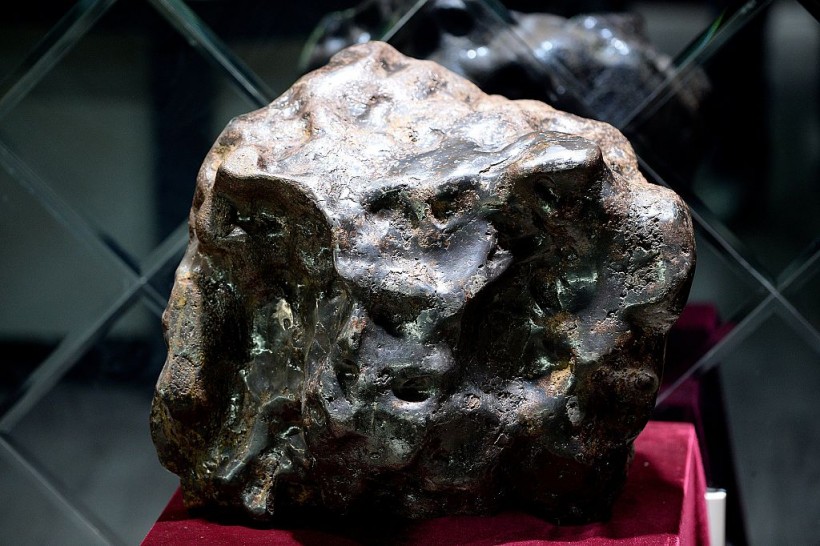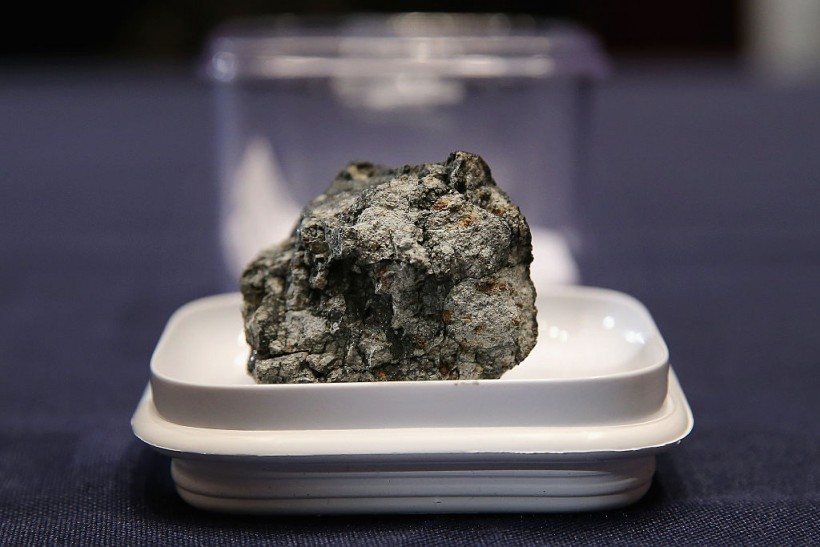(Photo : Chip Somodevilla/Getty Images)
Earth as we know it is the only one known to have living things in the solar system and the only one on that is abundant in water.
But there are still questions that we still cannot answer, like where and how it came from.
It is like a treasure hunt when it comes to science and research.
Scientists investigate the chemistry of carbon and water to understand how life emerged on Earth. They are tracking various forms or should scientists say, isotopes and their constituents over the history of the universe.
Read More: NASA's Artemis 1 moon mission rocket faces new delays
Does water exist before Earth?
According to Sciencealert, Jérôme Aléon, a geochemist from the French National Museum of Natural History, and his team discovered that the meteorite from the birth of the solar system's isotopes of water matched from the water isotopes that was found on Earth today.
Also, Aléon stated in their research paper that the initial isotopic composition of water in the solar system is of paramount importance to understanding the origin of water on planetary bodies but despite numerous studies, it will remain unknown.
The researchers used an innovative method they developed to analyze one of the oldest meteorites in the solar system, and the data show that two gas reservoirs existed 200,000 years of the solar system's first existence, even before the formation of the earliest planets, as per Vervetimes.
Evidence of the existence of water before Earth

To go with China-space-luxury-lifestyle-offbeat,FEATURE by Tom HANCOCK This picture taken on September 19, 2014 shows one of the dozens of meteorite specimens displayed under a spotlight at Tong Xianping's showroom in Urumqi, in China's far-western Xinjiang region. One small cheque to a businessman, one giant leap for a meteorite: after journeys of millions of kilometres, rocks formed from the primordial soup of the solar system have landed on the walls of a Chinese showroom
Aléon and his colleagues analyzed a meteorite that was found in Kazakhstan in 1962 called Efremovka meteorite using their new technique developed.
It has some elements that were dated back 4.57 million years ago.
Its ancient inclusions on the said meteorite were calcium and aluminum. As per Sciencealert.
To identify and examine all the minerals in their sample, they used a focusing ion beam imaging to measure the water content of the said meteorite.
They've compared those results to other eight terrestrial reference materials with a high range of water content.
According to Vervetimes, with the reference of the meteorites, Aléon and his team were able to measure its record directly for the first time.
The minerals and ratios in the Efremovka meteorite revealed that one, the reservoirs consisted of the solar gas in which all the matter of the solar system originated. And the second, gas reservoir was supplemented in water vapor and already had the isotopic signature of terrestrial water.
The first reservoir contains solar gas from which the matter in the solar system ended up condensing while the reservoir contains water that probably came from a massive influx of the interstellar material that fell at the time of the protostellar collapse, according to Sciencealert.
According to Sciencealert, "The ubiquitous hydrogen isotopic composition observed in large, early-formed telluric planetesimals was reached in the first few 100,000 years of the Solar System owing to a massive influx of interstellar matter infalling directly in the inner Solar System, rather than being produced in a more evolved protoplanetary disk," said by the researchers on their research papers
Related Article: Meteorite From Mars Offers New Insights On Red Planet's Past, And It's Not What We Knew
© 2024 NatureWorldNews.com All rights reserved. Do not reproduce without permission.


![Tsunami Hazard Zones: New US Map Shows Places at Risk of Flooding and Tsunamis Amid Rising Sea Levels [NOAA]](https://1471793142.rsc.cdn77.org/data/thumbs/full/70325/280/157/50/40/tsunami-hazard-zones-new-us-map-shows-places-at-risk-of-flooding-and-tsunamis-amid-rising-sea-levels-noaa.jpg)



